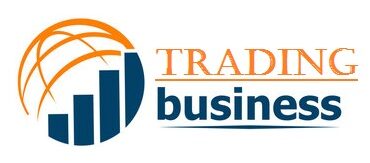Are you considering investing in ETFs (Exchange-Traded Funds) but need help knowing where to start? Investing can be overwhelming, and it’s essential to understand the details of any investment before taking the plunge.
In this article, we will guide you through what you need to understand about ETFs and provide information on how they work, their advantages and disadvantages, and essential tips for making your investments successful. With a better understanding of ETFs, you’ll be ready to make informed decisions about your financial future.
Understanding ETFs
Exchange-traded funds, commonly known as ETFs, have become a popular investment vehicle for seasoned and novice investors. An ETF is a type of security that tracks an underlying index, a commodity, or a basket of assets. Unlike traditional mutual funds, ETFs trade on stock exchanges, enabling investors to buy and sell them daily, just like stocks. They offer an easy and cost-effective way to diversify portfolios, providing exposure to a wide range of stocks, bonds, or other assets.
ETFs operate with a passive management strategy, which involves mimicking the performance of the underlying index by using a set of predefined rules. Understanding the ins and outs of ETFs can help investors make informed decisions about how to allocate their investment portfolios and achieve their financial goals.
Diversifying your portfolio with ETFs
ETFs offer a convenient way to diversify your portfolio by providing access to various asset classes, sectors, and regions. By investing in ETFs, you can spread risk across multiple investments instead of putting all your eggs in one basket. This diversification helps mitigate the risk associated with any company or sector underperforming. Moreover, ETFs are passively managed, meaning they require minimal day-to-day management. It makes them a simple and efficient way to diversify your portfolio without constant monitoring.
However, it’s worth noting that not all ETFs offer the same level of diversification. Some ETFs track a specific index or sector, while others may have a broader scope. Before investing in an ETF, research its underlying assets and determine if it aligns with your investment goals.
How to pick the suitable ETFs
When choosing an ETF, it’s crucial to conduct thorough research and understand the risks associated with the investment. Consider your risk tolerance level, which measures how much volatility you can handle in your investments. Some ETFs may offer higher returns but come with higher risk, while others may provide more stability but lower returns.
Another essential factor to consider when choosing an ETF is its tax implications. Unlike mutual funds, ETFs do not distribute capital gains to their investors. It means you won’t face unexpected tax consequences and can better manage your overall tax liability.
Pros and cons of investing in ETFs
ETFs offer several advantages over traditional mutual funds and individual stocks. They provide investors with a diversified portfolio, low fees, and tax efficiency. As mentioned earlier, ETFs also offer flexibility in daily trading, making them ideal for investors who prefer more control over their investments.
However, just like any investment vehicle, ETFs also have some drawbacks. One of the main disadvantages is that ETFs cannot outperform the market. Since they track an underlying index, their performance will always be similar to the market’s overall performance. Additionally, some ETFs may have lower liquidity and trading volume, making it challenging to buy or sell them at desired prices.
Different types of ETFs
ETFs offer exposure to a diverse range of assets, including stocks, bonds, commodities, and currencies. Depending on your investment goals and risk appetite, you can choose from different types of ETFs that suit your needs.
Stock ETFs track equity indexes such as the S&P 500 or Dow Jones Industrial Average and provide investors access to many companies through a single investment. Bond ETFs, on the other hand, invest in fixed-income securities and offer investors exposure to various types of bonds, such as government, corporate, or municipal bonds.
Currency and commodity ETFs provide access to commodities like gold or oil and foreign currencies. These ETFs help diversify your portfolio further by adding asset classes not typically available through traditional investments.
Strategies for getting the most out of your investments
To maximise the benefits of investing in ETFs, it’s essential to have a solid strategy in place. It involves understanding the market and timing your investments correctly. Trying to time the market is often considered a risky approach, as it requires predicting the future movements of the market. Instead, focus on long-term investments and avoid making impulsive decisions based on short-term fluctuations.
Another vital aspect of successful ETF investing is monitoring fees and expenses. While ETFs generally have lower fees than mutual funds, it’s essential to compare the expense ratios of different ETFs before making a decision. Additionally, asset allocation is crucial for building a successful investment portfolio. By diversifying your investments across various assets and sectors, you can reduce risk and increase potential returns.

